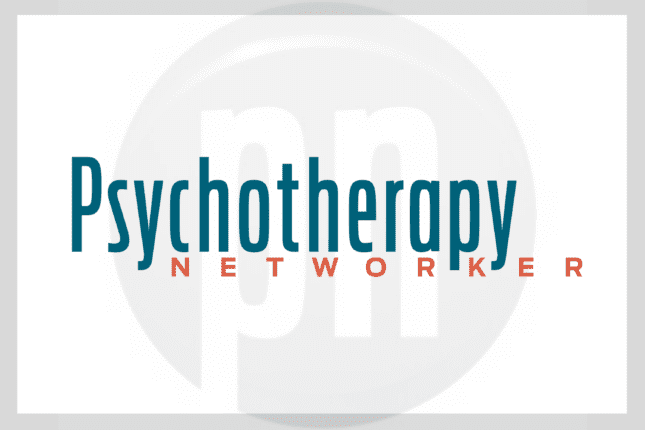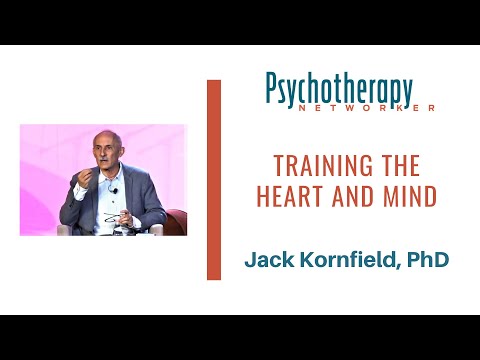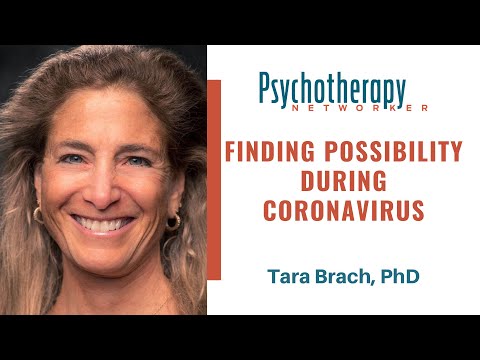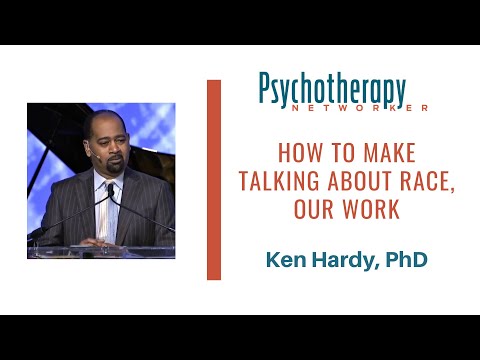Parker Palmer, who wrote The Courage to Teach, talks about the difference between a relationship that’s soul to soul instead of role to role. It’s the soul-to-soul relationship that heals, and the healing goes in both directions. Our work as therapists can gain a new dimension when we get rid of the idea that someone is the healer and someone is the healee, because every single patient, every single client whom we see, affects us.
As quantum physicist Erwin Schrödinger said, “If you could measure the sum total of the number of minds in the universe, there would be just one.” And now we’re beginning to see that in the field of medicine. In fact, Larry Dossey, a physician who was formerly chief of staff at Medical City Dallas Hospital, writes about three eras in our understanding of healing. The first is understanding the physical body as a machine of sorts. The second is understanding that the mind not only affects the body, but that the mind and body are a unified field. The third is that, beyond the fact that my mind affects my body and vice versa, your mind affects my body, and my mind affects your body, because there’s only one mind.
In the quantum world of nonlocality, there’s no distance. This is demonstrated in Bell’s Theorem. Let’s say that there’s a molecule of salt—sodium chloride. When it’s sprinkled on your food, eaten, and then excreted, the two atoms of the molecule are broken apart. The sodium may be in one place and the chlorine somewhere else. But even in separate places, if the sodium rotates, so does the chlorine. Everything is connected in what Albert Einstein called a “spooky” way that’s beyond the Newtonian physics of gravity and larger forces.
I believe that we’re connected with our clients not only when we’re in a room together, eyeball to eyeball, but also in a quantum sense. That means that even when we’re at a distance, we’re never actually separated. The therapist–client bond is a sacred relationship, and most people don’t realize that it lasts forever. In the movie Avatar, the characters say “I see you” to express their most intimate connection with each other. To see each other deeply is to be each other. There’s a quantum entanglement.
Attachment theory echoes something Plato understood a long time ago when he discussed three parts of the soul. Part one was reason, what modern brain science identifies as the activity of the prefrontal cortex. The second part was eros, what brain science locates in the limbic system. The third part was thymos, the hunger for recognition. This is where the frontostriatal pathway comes into play, connecting the medial prefrontal cortex—where some aspects of self-awareness reside—to the ventrostriatal pathway, which is part of the motivation and reward circuit. We know that when this pathway is weak, psychiatric difficulties are increased. When we reduce a client to a diagnosis—a role rather a soul—it’s the antithesis of working with this pathway.
The desire to know oneself and to be known and respected is a central human motivation, the unseen water in which all good therapists swim. We know how to be with someone so that they feel seen in times of uncertainty, in times of pain, in times of joy. Even when we’re apart from them, we can be the safe place. That makes a big difference, and there’s just no substitute for it.
This kind of loving support induces and sustains the self-healing mechanisms of the body. It reduces inflammation, the final common pathway for virtually every illness, and increases human growth hormone, which knits up the “raveled sleeve of care,” to use a Shakespearean phrase. It even knits up the raveled sleeve of DNA. When the body makes cancer cells, for instance, human growth hormone can prevent some of those mistakes in DNA replication. Love increases not only endorphins and endogenous cannabinoids, but it increases the secretion of nitric oxide—no, not laughing gas, that’s nitrous oxide. Nitric oxide allows your arteries to relax to reduce your blood pressure and improve your circulation. At the same time, love enhances your motivation for well-being, living a good life, making positive choices, and taking care of yourself.
So, my friends, you and the kind care you offer are the medicine. Our first duty as therapists is to keep our medicine fresh and flowing freely. When we let ourselves get burned out, we lose the vitality and healing power inherent in the soul-to-soul connection.
In response to a young activist who wrote to him for advice, the great Catholic mystic Thomas Merton responded, “To allow oneself to be carried away by a multitude of conflicting concerns, to surrender to too many demands, to commit oneself to too many projects, to want to help everyone in everything is to succumb to violence. The frenzy of our activism neutralizes our work for peace. It destroys our own inner capacity for peace. It destroys the fruitfulness of our own work because it kills the root of inner wisdom, which makes work fruitful.”
Burnout—at its core—is really a spiritual crisis, where you lose your motivation and your capacity to connect. It leads to fatigue and getting cynical about your work and the results of your work. When you’re feeling emotionally drained and used up, the best part of your day starts to become when a client cancels.
Burnout creates a loss of empathy, and stress-related complaints begin to take hold of you. Back pain is a big one. So are digestive complaints, headaches, body aches, crushing fatigue, immune problems—the whole gamut of body–mind ills. These can be accompanied by loss of self-worth, diminished performance, and sometimes substance abuse.
Now for some good news. One of my favorite books is Anam Cara, which means “soul friend” in Gaelic. It’s by the late poet-philosopher John O’Donohue. In it, he says, “Your identity is not equivalent to your biography. There is a place in you where you have never been wounded, where there’s a seamlessness in you, where there is a confidence and tranquility in you. I think the intention of prayer and spirituality and love is now and again to visit that kind of sanctuary.” Just feel into that place—your own inner sanctum. If you can be a soul friend—an anam cara—to yourself, then you can give this priceless gift to your clients.
As therapists, we’re a sanctuary for those who come to see us, and our craft as healers is a true practice of the heart. But we have to guard the sanctuary of our own heart so that we come to sessions with the best medicine within us. We can’t give to another that which we don’t have ourselves. So let’s vow not to succumb to the violence of overwork, or become too occupied with the crazy scene unfolding around us in the political spectrum. Always remember that it’s not only technique, but also your presence, the numinous quality of heart and soul, that’s so essential to the healing work we do.
Photo © Psychotherapy Networker
Joan Borysenko
Joan Borysenko, PhD, is a Harvard-trained cell biologist, licensed psychologist, and spiritual educator. A pioneer in mind/body medicine and psychoneuroimmunology, she’s president of Mind-Body Health Sciences, LLC and a New York Times bestselling author of 17 books.













